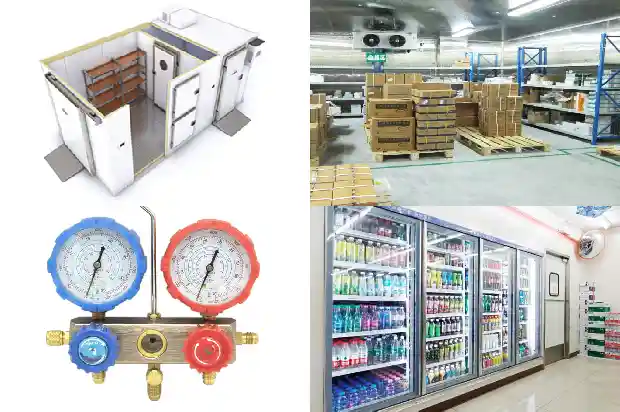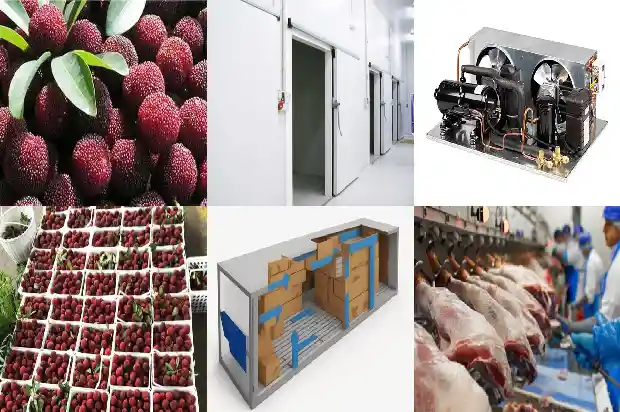How to Select and Use Water Pumps for Air - conditioning Systems?
2025-01-09
I. Chilled Water Pump
A device that drives the circulation of water in the chilled water loop. As we know, the terminals in air - conditioned rooms (such as fan - coil units, air handling units, etc.) need the chilled water provided by the chiller. However, due to the limitation of resistance, the chilled water will not flow naturally. Therefore, a pump is required to drive the chilled water to circulate for the purpose of heat exchange.
II. Cooling Water Pump
A device that drives the circulation of water in the cooling water loop. We know that after the cooling water enters the chiller, it takes away part of the heat from the refrigerant and then flows to the cooling tower to release this part of the heat. The cooling water pump is responsible for driving the cooling water to circulate in the closed loop between the unit and the cooling tower. It has the same appearance as the chilled water pump.
III.

A device used for air - conditioning water make - up, which is responsible for pumping the treated softened water into the system. It has the same appearance as the above - mentioned pumps. Commonly used pumps include:
- Horizontal Centrifugal Pump
- Vertical Centrifugal Pump
These two types of centrifugal pumps can be used in the chilled water system, cooling water system, and make - up water system. For places with a large machine room area, horizontal centrifugal pumps can be used. For places with a relatively small machine room area, vertical centrifugal pumps can be considered.

When pumps operate in parallel, the flow rate will decline to some extent. When the number of parallel pumps exceeds three, the decline is particularly significant. Therefore, it is recommended that:
- When selecting multiple pumps, the decline in flow rate should be considered, and generally, a margin of 5% - 10% should be added.
- The number of parallel pumps should not exceed three, and the number of refrigeration units selected should also not exceed three.
- For medium - sized and large - sized projects, chilled water and hot water circulation pumps should be set separately.
- Generally, the number of chilled water pumps and cooling water pumps should correspond one - to - one with the refrigeration units, and one spare pump should be considered. Make - up water pumps are generally selected according to the principle of one in use and one in standby to ensure reliable water make - up for the system.
The nameplate of a pump generally indicates the rated flow rate and head. When selecting a pump, we need to determine the flow rate and head of the pump, and then determine the corresponding pump according to the installation requirements.
Related Articles
- Basic Faults and Preventive Maintenance of Water - cooled Units
- Three Common Methods for Removing Water Scale from Water - cooled Condensers
- What Are the Differences Between Chillers and General Water - cooled Equipment?
- Selection of Bypass Control Valves for Air - conditioning Water Systems
- Operation of Screw - type Water - cooled Chiller Units
- Characteristics and Differences among Water System, Air System and Refrigerant System
- Accident Handling and Precautions for Circulating Water Pumps
- Startup, Shutdown and Accident Handling of Jet Water Pump
- How to Choose Between Water-cooled and Air-cooled Cold Storage?
- Introduction to Various Water Tanks in Air - conditioning Systems
- For Computer Room Air Conditioners, Besides Air - cooled and Water - cooled, What Other Cooling Methods Are There?
- Refrigeration System Failures: Handling System Blockages and Water Infiltration
- Both are dual - connected systems. How to choose between air - fluorine - ground - water and air - water - ground - water systems after all?
- Precautions for the Installation and Use of Water Flow Switches
- Water Flow Control Technology for Small Air-cooled Hot and Cold Water Units
- How to accurately choose water-cooled and air-cooled chillers?
- 4 Points on Causes of Water Leakage in Closed Cooling Towers
- Water-cooled Screw Chiller: Operation and Maintenance
